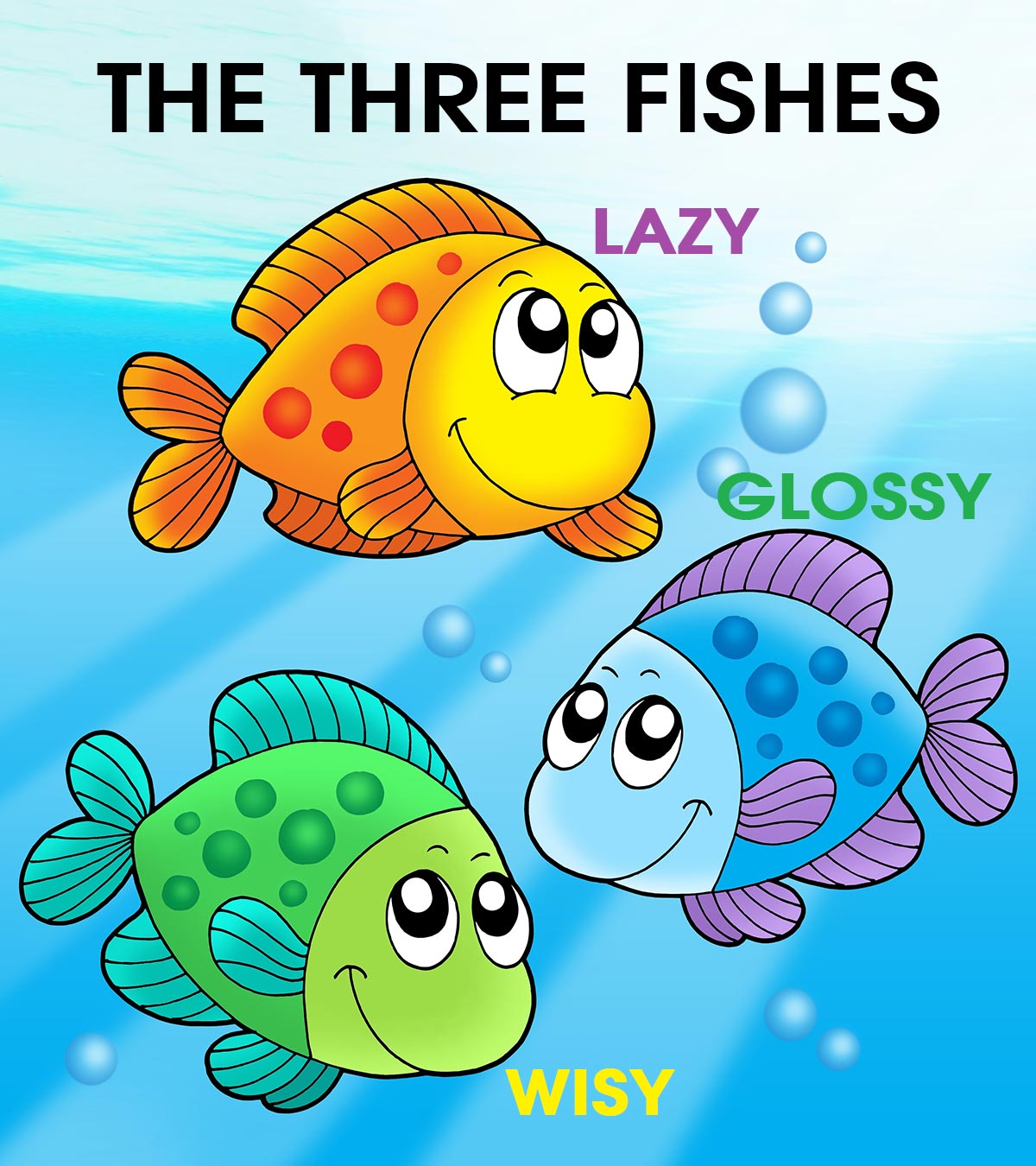
Image: Shutterstock
Children love listening to stories, making them an effective medium for communicating with them. Moral stories are an excellent way to help your growing child inculcate virtues and values, and positive attributes such as compassion, generosity, kindness, patience, empathy, perseverance, determination, leadership and remember them throughout their lives. These moral values shape a person’s character, personality, and behavior. The fable of three fishes is an example of one such moral story from the Panchatantra. Even if children may not fully understand the message hidden in the moral stories when they are very young but will eventually recall and rediscover as they grow older. Read on as we present the three fishes story in this post, along with a valuable moral for your little one.
The Three Fishes Story
The parable of the three fishes is an interesting and engaging one. It is also one of the popular moral tales from the Panchatantra tales.
- Once upon a time, there lived three fishes in a pond. They were close friends and were living together for years, in the same pond.
- One day, while on his journey, a passing fisherman saw that the pond was filled with fishes.
- He was surprised and delighted, and immediately informed his fellows about it. Together, they decided to come the next morning and catch those fishes.
- One of the three fishes, who was also the wisest, heard the conversation between the fisherman and his fellows.
- It devised a strategy, immediately rushed to the other two, explained the entire situation, and proposed a plan to leave the pond immediately and move to another place.
- The second fish agreed and decided to move out from the pond quickly.
- The third fish, however, mocked them. He felt that the pond was their home, and they must not leave their home.
- Since the other two fishes were unable to convince the third fish, they left the pond and decided to let him follow his own course of action.
- The next day, the fisherman and his fellows cast their nets and caught plenty of fishes. They also managed to catch the third fish, who had refused to leave the pond due to its foolishness, while the other two fishes, who had left earlier and displayed cleverness, were rescued and rewarded.
The Moral
One of the most prominent lessons and morals one can learn from this three fishes story is the importance of wisdom.
- It is important to act wisely when you foresee a problem.
- This story, among many other stories from the Panchatantra, doesn’t just instill inspiration and motivation in children but also imparts valuable life lessons such as wisdom, intelligence, the importance of time, teamwork, cooperation, and many others.
Storytelling – Why Is It Important?
Your child is now growing and learning new things every day. It is during this stage of development that he or she needs to be exposed to good values and knowledge, and storytelling is a great and interactive way to do that.
- Storytelling helps inculcate the habit of reading in children.
- It also helps them enhance their knowledge and learn facts about animals, plants, objects and different parts of the world.
- It widens their horizons and allows them to think in a broader perspective.
- Storytelling also helps improve the vocabulary and allows children to learn new words.
- It also helps build better thinking skills and is an activity that helps them grow both emotionally and mentally.
Best of all, most children’s stories are short and crisp, and they won’t take a lot of time from your busy schedule. So now there’s no reason to ditch that bedtime story – is there?
Frequently Asked Questions
1. What do the three fishes represent in the story?
The three fishes in the story represent the different characteristics of a person. The first one represents the wise and caring character who came to its friends to inform them about the upcoming danger or risk; the second fish represents the intelligence, who listened to its wise friend and reacted on time; the third fish represents a foolish character who did not listen to its friends and ended up in trouble.
2. How did the story’s ending illustrate the importance of friendship?
While the moral of this story is regarding the importance of wisdom, it also illustrates the importance of friendship. As soon as the first fish learned about the trouble, being a true friend, it immediately went to its friends to inform them. The second fish also trusted the friend’s word and acted immediately.
3. How does the story of the three fishes relate to real-life situations?
The story of the three fishes teaches us the significance of wisdom and adaptability in navigating real-life situations. It also teaches us how to plan and manage situations when we anticipate problems. Furthermore, it emphasizes the importance of trusting our companions and making wise decisions.
Every childhood narrative includes a moral lesson to inculcate values and principles in children, and similarly, this Panchatantra’s story of the three fishes is one such moral narrative. It revolves around three fishes that were close friends and have spent many years living in the same pond. The story emphasizes the value of wisdom and how to get out of the situation without losing. Read this story to your child before bedtime or in your free time to strengthen your relationship with them while also teaching them important life lessons.
Key Pointers
- Telling stories can serve as an excellent bonding time and aid children’s cognitive and emotional development.
- A story with a moral lesson can impart good virtues in children.
- Taken from the Panchatantra, this story revolves around three fish living in a small pond.
- This story teaches children about wisdom, intelligence, and teamwork.

Image: Stable Diffusion/MomJunction Design Team
















